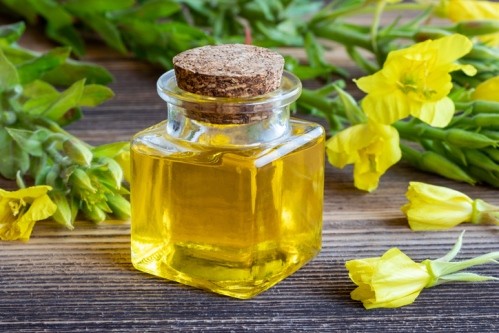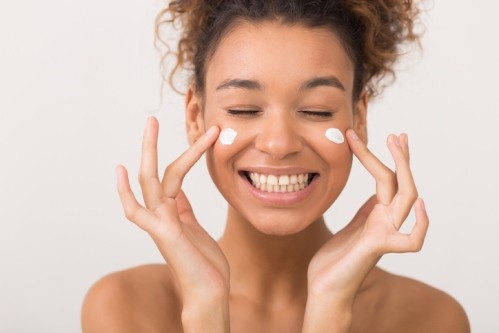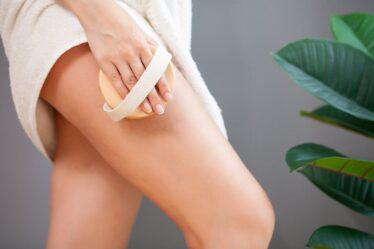
Here’s what you need to know about this all-natural oil and how you can use it to ease the annoying symptoms and freshen up in ways you never knew you could.
Evening evening-primrose oil is derived from the seeds of the plant Oenothera Biennis – a small wildflower that can be found open in North America, Europe and parts of Asia. Generations have used oil for its valuable benefits to the health and beauty of our bodies.
The precious properties of evening-primrose oil
The substance that makes evening primrose oil so unique to our body is gamma-linolenic acid (GLA), a semi-essential fat that is produced by our body. The abundance of polyunsaturated fatty acids, in particular, GLA makes evening primrose oil an excellent nutritional supplement for the treatment of various pathological conditions.
For example, it is of great benefit to the functioning of the heart, thanks to the contribution it makes to both arterial and venous circulation. Gamma-linolenic acid is also excellent for those who fight cholesterol: it helps to maintain low levels of bad cholesterol and triglycerides in the blood.
Its properties are invaluable for women too: it makes premenstrual syndrome less painful and relieves menopausal symptoms. Its intake regulates the menstrual cycle and ovulation accordingly, so it may also be useful for those who want to increase their fertility.
What is evening primrose oil used for?
 Evening primrose oil is mainly used to improve the elasticity and hydration of our skin. Its use is recommended for any dermatological problems: from atopic dermatitis to erythema. Also valuable in psoriasis, eczema, urticaria, acne, and sunburn.
Evening primrose oil is mainly used to improve the elasticity and hydration of our skin. Its use is recommended for any dermatological problems: from atopic dermatitis to erythema. Also valuable in psoriasis, eczema, urticaria, acne, and sunburn.
When the oil is used externally, as in these cases, it is better to use the natural or liquid version, preferring organic products that retain the original properties of the oil intact. For its application, it is preferable to massage the oil on wet skin in the selected area after taking a shower.
Relief of skin problems
Evening primrose oil can help relieve the symptoms of known difficult-to-treat and painful skin conditions such as psoriasis and eczema.
The high content of omega-6 fatty acids in primrose oil helps relieve the symptoms. If you have eczema and psoriasis, it is recommended that you use a combination of evening primrose oil with coconut oil every day, and of course, remember to consult your doctor in advance.
Delayed skin aging and the appearance of wrinkles
Gamma-linolenic acid (GLA), which is found in evening primrose oil, is known to have many skin benefits, including wrinkle smoothing.
The high level of antioxidants in the needle helps neutralize the free radicals that protect the skin from oxidation. The inclusion of this nourishing ingredient in skincare is also known to help smooth out the skin.
Acne reduction
 For teens suffering from acne, the use of evening primrose oil, both locally and internally, can help relieve the symptoms. To use topically for acne, combine one drop of tea tree essential oil, one drop of evening primrose oil and one drop of patchouli oil with one tablespoon of coconut oil.
For teens suffering from acne, the use of evening primrose oil, both locally and internally, can help relieve the symptoms. To use topically for acne, combine one drop of tea tree essential oil, one drop of evening primrose oil and one drop of patchouli oil with one tablespoon of coconut oil.
Tea tree oil has been proven to reduce acne due to its strong antibacterial properties, while patchouli oil is great for skin healing.
Stop Hairloss
This oil is great for hair care as well. It prevents hair loss due to stress and hormonal imbalances.
Studies show that using evening primrose oil locally can help with hair loss. To speed up the process, mix evening primrose oil with rosemary essential oil, which is also a proven remedy for hair loss. Combine a few drops of each oil with coconut oil and apply daily with a massage.
Contraindications to evening primrose oil
Another point in favor of evening primrose oil is that there are very few contraindications. Its use is actually recommended for anyone with particularly dry skin and a desire to hydrate; in particular, its use is recommended for the elderly who, due to aging, produce less gamma-linolenic acid.



